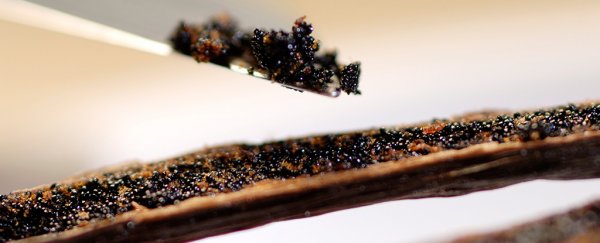The kinds of smells people like or dislike tend to be common across individuals from distinctly different cultural backgrounds, which may suggest an evolutionary basis for our seemingly universal odor preferences, scientists say.
In a new study, researchers asked individuals from 10 distinct cultural groups – including a number of indigenous hunter-gatherer peoples and traditional farming communities, as well as modern city-dwellers – to sniff 10 unique scents and rank them in order of pleasantness.
"We wanted to examine if people around the world have the same smell perception and like the same types of odor, or whether this is something that is culturally learned," says neuroscientist Artin Arshamian from the Karolinska Institute in Sweden.
"Traditionally it has been seen as cultural, but we can show that culture has very little to do with it."
The researchers travelled far and wide, pooling data from field work in several cultural environments, representing diverse modes of subsistence across Thailand, Mexico, Ecuador, and the US, and encompassing deserts, tropical rainforests, highland climates, coastal regions, and more.
Participants included a number of hunter-gatherer groups (including the Semaq Beri people from the Malay Peninsula in Thailand), as well as several subsistence horticulturalist and agriculturalist communities (such as the Chachi people of Ecuador), and a cohort of subjects from New York City, representing a modern racially and ethnically diverse urban environment.
In each place visited, the participants – over 280 individuals in total – were presented with 10 randomly ordered pen-like odor dispensing devices. They were asked to smell each one and order the pens in a row, from most pleasant to most unpleasant.
The odor generally ranked as most pleasant was vanillin (the main component of vanilla extract), while the next most popular was ethyl butyrate (which has a fruity smell, and is often used as a flavor enhancer in fruit-flavored food). Third was linalool, which has a floral smell.
The least popular smell in the study was isovaleric acid, which is known for having a pungent, unpleasant odor, associated with cheese, soy milk, and sweat.
While much prior research has examined this area – looking to see how odor perception is informed by cultural associations – the researchers here say that previous experimental approaches have failed to adequately study a diverse cultural spectrum.
Ultimately, we might expect people's ranking of odor pleasantness (odor valence) to reflect a mixture of their cultural tradition, personal sensibility, and universal preferences (ostensibly based on odorants' molecular features), but the extent of each of these influences has so far been unclear.
Arshamian's team found the influence of cultural traditions plays only a small role in people's odor preference, with odor valence rankings correlating strongly and positively across all the cultures measured.
When people ranked individual scents differently to one another in terms of perceived pleasantness, the researchers say participants' culture only explained about 6 percent of the variance, whereas 54 percent was due to people's individual preference, and the scent chemical's molecular profile explained around 40 percent of the variance.
In other words, while people can and do rank different smells differently, most of the variation observed seems to be a matter of personal preference, not a reflection of culture; at the same time, there is a lot of crossover between cultures in terms of what people like and don't like.
"There was a substantial global consistency," the researchers explain. "Taken together, this shows that human olfactory perception is strongly constrained by universal principles."
As for why the perception of odors appears to be at least somewhat universal across cultures – and is predicated upon the physicochemical properties of the odorants themselves – it's plausible that a preference for certain chemical scents may have served an evolutionary purpose in our history, somehow increasing our survival chances in times long forgotten.
If so, the findings here could help us to examine the possibility further, the researchers suggest.
"Now we know that there's universal odor perception that is driven by molecular structure and that explains why we like or dislike a certain smell," Arshamian says.
"The next step is to study why this is so by linking this knowledge to what happens in the brain when we smell a particular odor."
The findings are reported in Current Biology.
